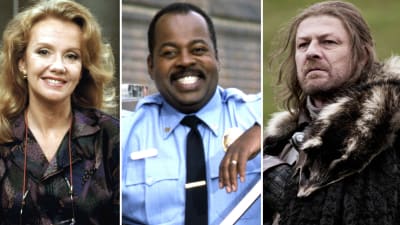
Round 12 of the 2025 F1 season takes us to Silverstone for the British Grand Prix.
Everything You Need to Know About the British Grand Prix
Home to five drivers on the grid, Lewis Hamilton, George Russell, Lando Norris, Alex Albon, and Ollie Bearman, the British Grand Prix is one of F1’s most celebrated races.
From hosting the first F1 World Championship race to delivering countless moments of triumph, drama, and controversy, the race weekend continues to be a highlight of the F1 calendar.
Silverstone’s fast layout, combined with a passionate home crowd, creates an atmosphere unlike any other, a fitting stage for motorsport’s top show. The crowd’s reaction to Hamilton’s ninth home win last year, in which he won his first Grand Prix since 2021, alone is one of the event’s most unforgettable moments.
The Early Days
The British Grand Prix began at Brooklands, a concrete oval built in 1907 near Weybridge in Surrey. As the world’s first purpose-built motor racing venue and one of Britain’s earliest airfields, Brooklands set the stage for motorsport in the UK.
Following the successes of Henry Segrave, who clinched victories at the 1923 French Grand Prix and the 1924 San Sebastián Grand Prix in a Sunbeam, Britain earned the honour of hosting a major international race.
The inaugural British Grand Prix, officially named the Grand Prix of the Royal Automobile Club, took place at Brooklands on 7 August 1926. French drivers Robert Sénéchal and Louis Wagner triumphed in their Delage 15 S 8. The event returned in 1927, with Robert Benoist securing victory once again for Delage.
Donington Park hosted several non-championship events known as the Donington Grand Prix in 1937 and 1938. These races attracted top European teams, including Mercedes and Auto Union, with Bernd Rosemeyer and Tazio Nuvolari claiming wins. However, these were not officially designated as British Grands Prix.
Post-War Revival
World War II left Brooklands badly damaged and unusable. In the post-war era, Britain repurposed former Royal Air Force airfields for racing, and one such venue was Silverstone, located between London and Birmingham. The circuit sits between the Northamptonshire and Buckinghamshire borders.
Silverstone hosted its first major event, the Royal Automobile Club International Grand Prix, won by Italian Luigi Villoresi in a Maserati. The following year saw extensive modifications, creating a layout that remained for decades.
A landmark moment arrived in 1950 when the British Grand Prix became the first ever F1 World Championship race. Giuseppe “Nino” Farina won in an Alfa Romeo. The following year saw a historic upset as José Froilán González delivered Ferrari’s first-ever F1 win, ending Alfa Romeo’s dominance.
Further developments followed. In 1952, Silverstone shifted its pit complex, and Alberto Ascari dominated both the 1952 and 1953 races. González returned to win in 1954, reinforcing Ferrari‘s growing strength.
Silverstone and Ainetree
From 1955, the British Grand Prix alternated between Silverstone and Aintree, a circuit based around Liverpool’s Grand National horse racing track.
Aintree hosted the odd years, alongside 1962, while Silverstone hosted the even years. Stirling Moss took home his first win in 1955 after a duel against teammate Juan Manuel Fangio.
Other highlights include Fangio winning for Ferrari in 1956, Moss driving the British-built Vanwall to secure a victory in 1957, and Jim Clark taking the final F1 win at Aintree before its closure in 1962.
Silverstone and Brands Hatch
From 1964, the British Grand Prix began alternating with Brands Hatch in Kent. Jim Clark dominated the early races at each venue, while the 1968 Grand Prix saw a battle between Jo Siffert and Chris Amon play out, with Siffert prevailing.
The late 1960s and the 1970s saw rivalries dominate the sport. Jackie Stewart battled Jochen Rindt in 1969, while Rindt capitalised on Jack Brabham running out of fuel to win in 1970.
The 1976 Brands Hatch race is particularly controversial. James Hunt was disqualified after initially winning, handing the victory to Niki Lauda. Hunt bounced back in 1977 to win without dispute.
As the 1980s progressed, the British Grand Prix was home to a groundbreaking win for the carbon-fibre McLaren of John Watson in 1981.
However, growing concerns about Brands Hatch’s limited run-off areas and inability to expand led to its final F1 race in 1986. Nigel Mansell switched to teammate Nelson Piquet’s spare car and powered to victory in front of a home crowd.
A Permanent Home
From 1987 onwards, Silverstone became the permanent home of the British Grand Prix. That year, the circuit introduced a new chicane before Woodcote, but the essence of the track’s high-speed character remained.
The following years were filled with drama. Ayrton Senna mastered the rain to win in 1988, while Alain Prost capitalised on Senna’s mistake to win in 1989. Silverstone was then redesigned in 1991, adding an infield section to reduce speeds by 15%.
In the wake of the 1994 tragedies at Imola, Silverstone quickly implemented new safety features, including a chicane at Abbey. Damon Hill won that year, something his father, Graham Hill, did not achieve. Johnny Herbet was the next Briton to win in 1995.
The Modern F1 Era
The 2003 British Grand Prix made headlines when a track invader ran onto the Hangar Straight, narrowly avoiding disaster. Rubens Barrichello won the race. Around this time, tensions over finances rose, and the British round was almost dropped from the calendar. However, a deal was secured to keep the race at Silverstone through 2009.
In 2008, Hamilton delivered a masterclass in the wet, winning by over a minute in front of his home crowd. This would be his first of nine British Grands Prix wins thus far.
A new circuit layout, known as the Arena configuration, was revealed in 2010, followed by a new pit complex in 2011. Despite the changes, Silverstone retained its reputation as one of the fastest and most demanding circuits on the calendar.
Recent years have brought further drama. Hamilton won his sixth British Grand Prix in 2020 despite a puncture on the final lap. The 2021 race saw a controversial collision between Hamilton and Max Verstappen at Copse, which saw the Dutchman fly into the barriers. In 2022, Zhou Guanyu survived an accident on the start-finish straight, while Carlos Sainz claimed his maiden F1 win.
The 2024 British Grand Prix marked Hamilton’s first Grand Prix win since 2021.
Silverstone Circuit
| Circuit Information | Details |
|---|---|
| Circuit Length | 5.891 km |
| First Grand Prix | 1950 |
| Number of Laps | 52 |
| Fastest Lap Time | 1:27.097 – Max Verstappen (2020) |
| Race Distance | 306.198 km |
Credit: IMAGO / BSR Agency Recording Date: 07/07/2024
More must-reads:
- Another smart signing leaves Nuggets in unfamiliar territory
- Mitch Marner is the perfect Golden Knights addition in every way
- The 'Multi-time NBA MVPs' quiz
Breaking News
Trending News
Customize Your Newsletter
 +
+
Get the latest news and rumors, customized to your favorite sports and teams. Emailed daily. Always free!








